Venue Whiskey Au Go Go Number of deaths 15 | Date 8 March 1973 | |
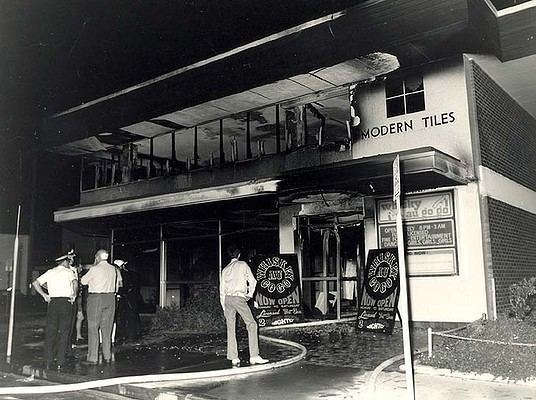 | ||
Convicted James Richard FinchJohn Andrew Stuart Similar Luoyang Christmas fire, Gulliver's nightclub fire, Rhythm Club fire, Summerland disaster, Club Cinq‑Sept fire | ||
Memorial for whiskey au go go firebomb victims
The Whiskey Au Go Go fire was a fire that occurred at 2.10 am on Thursday 8 March 1973, in the Whiskey Au Go Go nightclub in Fortitude Valley, Brisbane, Australia that killed 15 people. The building is at 356 St Pauls Terrace, Fortitude Valley (on the corner of Amelia Street and St Paul's Terrace) and still stands as of 2017.
Contents
- Memorial for whiskey au go go firebomb victims
- Building fire
- Arrest
- Trial and imprisonment
- Finchs appeals
- Release from prison
- References
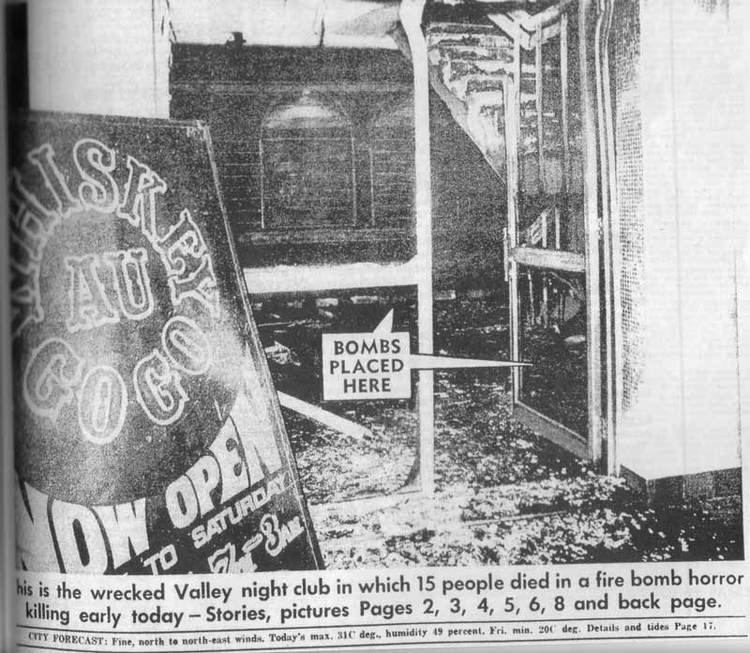
Building fire
The building was firebombed, resulting in the deaths of 15 patrons and staff.
The fire began with the ignition of two 23-litre drums of diesel fuel in the building's foyer. The drums were thrown into the foyer, then ignited by a lit torch thrown through the open door. When ignited the burning diesel sent carbon monoxide up to the club's main room on the first floor. Large quantities of grease had been smeared over the stairs of the building's rear fire escape. The door of the fire escape had also been greased. The fifteen people killed had died of asphyxiation as they struggled to open the greased fire escape doors. Police believed that had they been able to open the doors they would have slipped and fallen down the steel stairs. A fire brigade officer reported hearing screams from behind the closed door as firemen tried to smash it down. Other reports indicated that fuel seeped from the two 23-litre drums into the carpet of the foyer, causing a fireball to engulf the stairway.
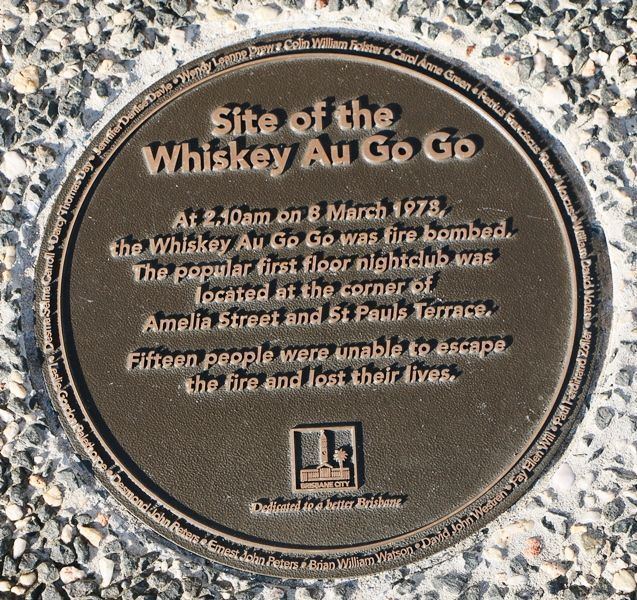
About 100 patrons, bar staff and entertainers had been in the club at the time of ignition. Many escaped by jumping from broken windows onto an awning and dropping 15 feet to the ground.
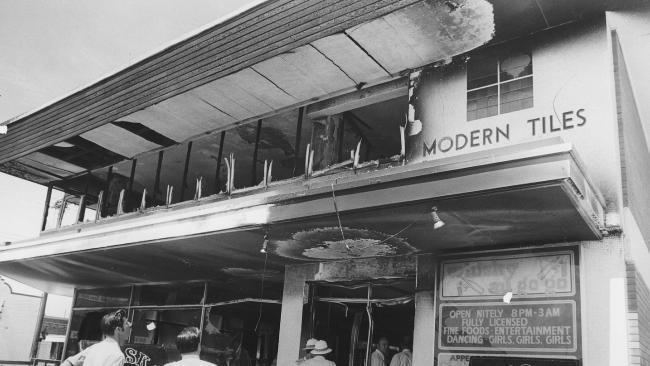
Of the six person band, two musicians were killed. Also killed was the female singer they accompanied. Jennifer Denise Davie, a drinks waitress employed in the bar, also died.
Arrest
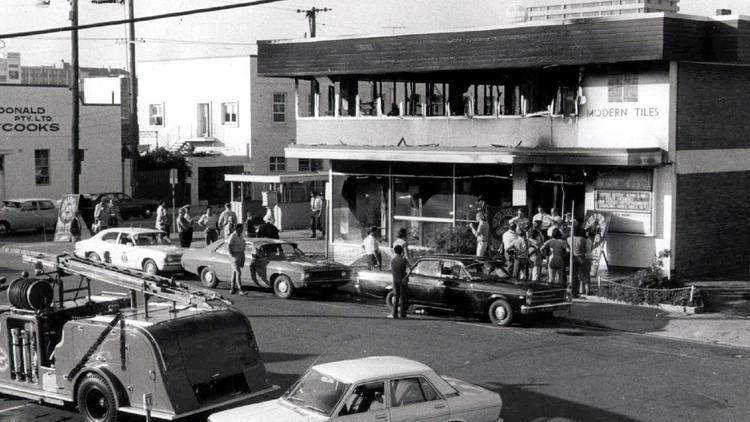
James Richard Finch, 29, and John Andrew Stuart, 33, were arrested 12 hours apart in suburban Jindalee on the weekend after the fire. On the Saturday the Queensland Government had offered a $50,000 reward for information on the bombing. Police arrested one man at the Jindalee house when he pulled a knife on them during an interview on the Saturday. Later they returned to the location and eventually located the second man hiding in nearby scrub on Sunday morning.
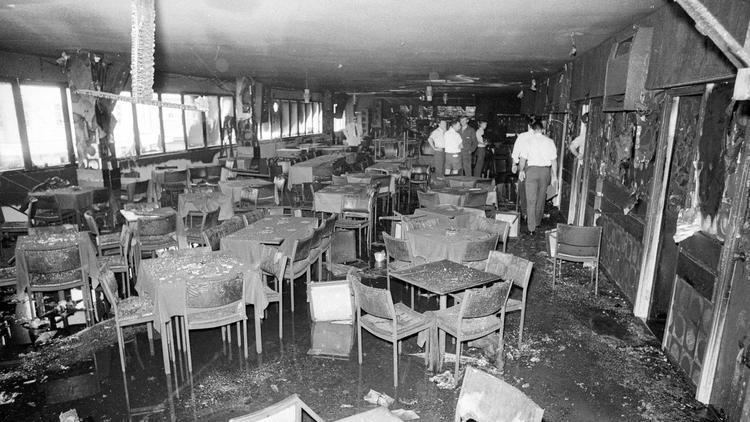
In 1966 Finch had been sentenced to 14 years prison after being found guilty of malicious wounding with a firearm and carrying an unlicensed pistol. Finch had fired two shots during an altercation near a petrol station in Oxford Street, Paddington, Sydney, injuring two men. At that trial Finch was described by police as "an active young criminal and associate of the most violent criminals in Sydney." Finch had been paroled after serving seven years of that sentence.
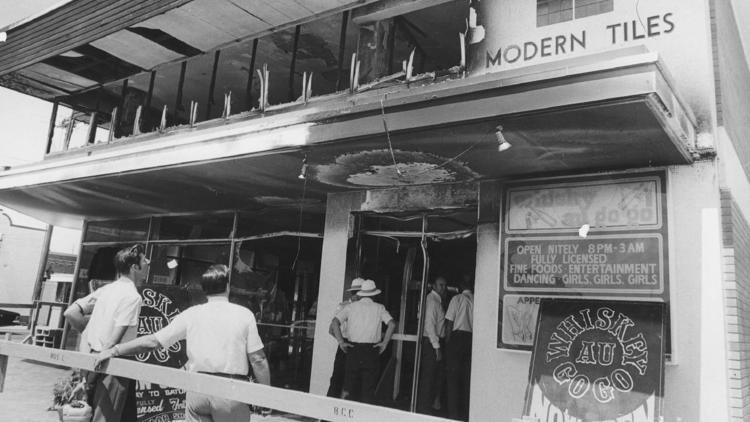
Immediately after their arrest, both loudly protested their innocence at their first court appearance. It was reported that there was commotion in the dock when the men were brought before Brisbane Magistrates court after their arrest for arson and 15 counts of murder. Stuart was restrained by six detectives while Finch was relatively quiet and restrained by one detective. Stuart was also charged over injuring an investigating detective with a hunting knife during a police interview on the Saturday. During this hearing Finch claimed he was innocent, that on his arrest police had presented him with a prepared written confession, and had beaten him.
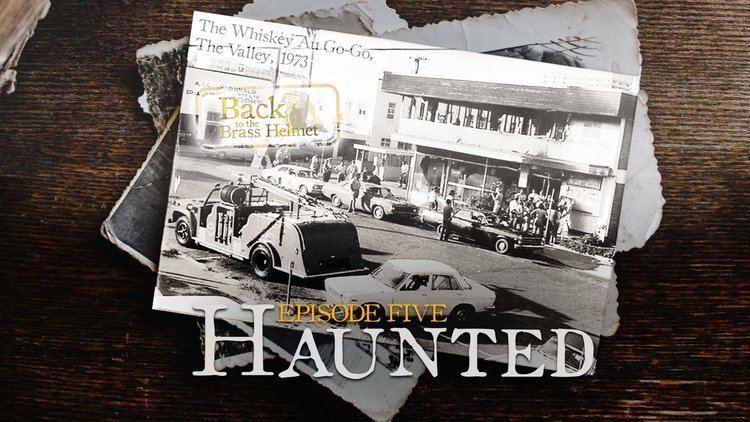
This hearing heard that Finch, previously resident of Australia, had been imported by Stuart from his native England for the extortion scheme and had returned to Australia 12 days prior to the bombing. Police claimed Finch had privately confessed to them and had implicated Stuart. The police reported that Finch had wilfully set the fire while Stuart had plotted to establish a false lead that "southern criminals" were planning an extortion racket in Brisbane.
Trial and imprisonment
During their trial Finch and Stuart loudly protested their innocence, claiming they had been "verballed": convicted based on false confessions. They both pleaded not guilty.
During the original trial for murder and arson Finch's behaviour interrupted proceedings. When the trial was due to commence it was suspended when he claimed to have bitten off one of his fingers and swallowed several antennas. X-rays confirmed the presence of foreign objects in his stomach. It was confirmed that the tip of the little finger on Finch's right hand had been amputated and that he had swallowed wire. Days later there was another delay when Finch was absent, having been deemed unfit to appear.
During the trial Stuart had also confounded proceedings. He was hospitalised several times for operations to remove wire crosses he had swallowed. Through his incarceration Stuart underwent a total of five operations to remove foreign objects from his stomach.
On 23 October 1973 both were convicted of the murder of Jennifer Denise Davie. The jury found that the fire was lit as part of an extortion-terror campaign aimed at Brisbane nightclub operators, and they were sentenced to life in prison. Stuart made Australian legal history: he was sentenced despite not being in court. At the time he was in hospital recovering from his third stomach operation as a result of him swallowing wire.
During their imprisonment in Boggo Road Gaol they continued to protest their innocence, fighting a protracted legal battle for release and continuing their self-harm to draw attention to their protest. In one incident Stuart sewed his lips together using wire paperclips. This occurred during a strike by warders when police had taken charge of the prison; Stuart had previously warned warders he would do this to prevent police from questioning him. During this period Finch kept up a tirade of abuse against police in the prison, once emptying his sanitary bucket over them.
Finch's appeals
Finch tried to take his appeals to the Privy Council. In February 1984 the High Court of Australia court granted a permanent injunction restraining Finch from proceeding with the petition he had lodged with the Privy Council seeking leave to appeal a decision of the High Court.
Finch appealed this decision in order to appeal the decisions of the Queensland Court of Criminal appeal made in 1974 and 1978. Those decisions had dismissed Finch's original appeal and his later application for special leave to appeal.
The Australian Government, with the support of the Queensland Government, sought an injunction to prevent Finch proceeding in London. On 28 June the High Court of Australia refused this injunction, and the appeal reached the Privy Council in London on 6 July 1984. The Privy Council took less than thirty minutes to dismiss the application. The five member bench decided that the matter brought before it by Finch was not a matter that should be heard by the council.
Release from prison
Stuart was found dead in his cell of Boggo Road Gaol after a six-day hunger strike in 1979. Stuart was aged 38. At the time it was reported that many police regarded him as Australia's most violent criminal.
In 1986, Finch married Cheryl Cole, a wheelchair-using woman with a terminal illness. Finch won his battle for release in 1988, after almost 15 years in prison. As part of his parole conditions he was deported back to his birth country, England. There, in October 1988, he confessed to the crime. He told The Sun newspaper in a videotaped interview that he had tipped two drums of fuel into the doorway of the nightclub building before the firebombing. He also repeated claims that he had been "verballed" by the original police investigators (i.e. that they lied about words Finch had purportedly said, and that those lies were used as evidence). He also claimed that a policeman named at the enquiry had ordered the bombing. He later recanted the confession.
Jana Wendt interviewed Finch on A Current Affair by satellite to further discuss that admission. Wendt says that "When I suggested to him that his admission might mean that he could also be extradited to Australia to face other murder charges, his behaviour suddenly changed dramatically. He said he was now confused and could not recall murdering anybody. He claimed he had been brainwashed and bumed."
